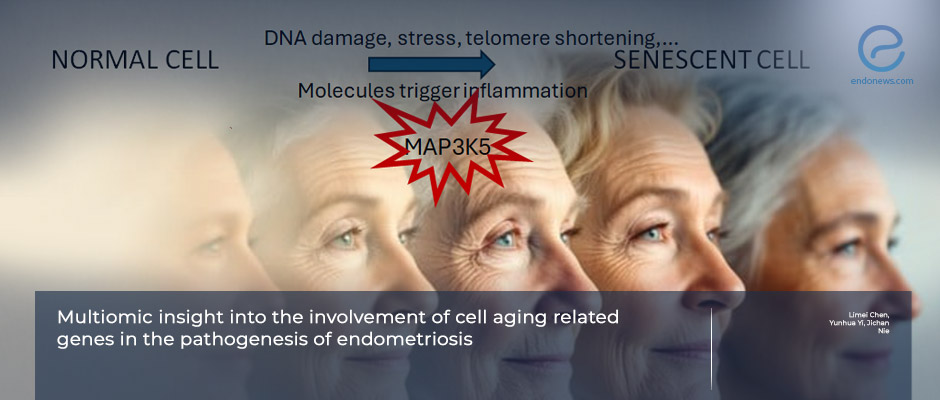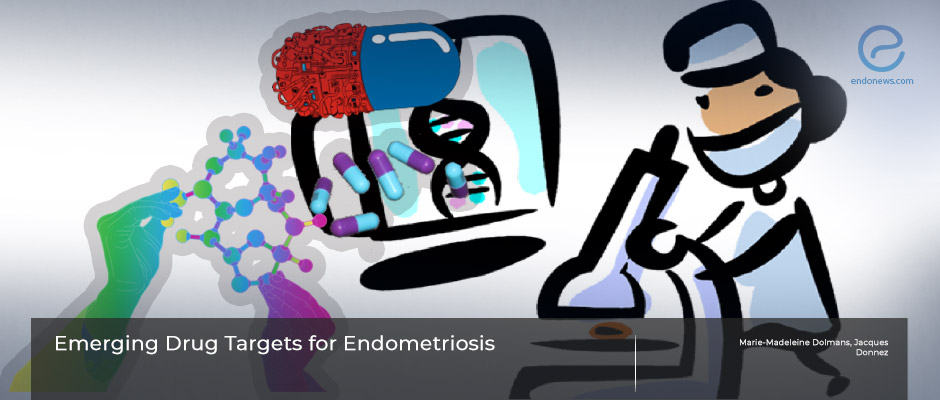Cell-Aging-Related Pathways Linked to Endometriosis Pathogenesis
The biology of endometriosis continues to challenge conventional understanding. While inflammation, hormonal imbalance, and immune dysfunction have long been recognized, this new study explores an entirely different dimension—cellular aging. Researchers from Shanghai Obstetrics and Gynecology Hospital, used a multiomic approach…
Key Points Lay SummaryExploring tissue origins and age characteristics in endometriosis
Despite its widespread occurrence, the precise factors leading to endometriosis and the nature of its symptoms remain uncertain. To better understand the disease and improve treatment, Leap et al. from the US and Austria explored the use of DNA methylation…
Key Points Lay SummaryScientific unfolding will lead new drug targets
Drs. Dolmans and Donnez from academic institutions located in Brussels, Belgium, have published their comprehensive review on the current pathophysiological concepts in endometriosis with possible drug treatment potentials in the recent issue of a scientific journal named “Biomolecules”. As a…
Key Points Lay SummaryEpigenetic changes in endometriosis: A new target area for therapy
Epigenetics is the heritable genetic modifications and changes in chromosomes without alterations in the DNA sequence. Numerous mechanisms, like DNA methylation and RNA editing to mention a couple, have been discovered as epigenetic alterations that are triggered by environmental factors.…
Key Points Lay SummaryIt is time for redefining endometriosis with our contemporary scientific knowledge - Philippe Koninckx, MD, Ph.D.
Endometriosis defined as endometrium-like tissue outside the uterus has a poorly understood natural history. It is a heterogeneous disease having genetic-epigenetic features with many biochemical changes in the lesions. The Sampson hypothesis of implanted endometrial cells following retrograde menstruation is not…
Key Points Lay SummaryA Possible genetic target for endometriosis treatment
Mutations in the chromosome remodeling complex SWI/SNF subunit ARID1A were first identified in ovarian clear-cell carcinoma and ovarian endometrioid carcinoma, two endometriosis-associated epithelial ovarian cancer subtypes. ARID1A gene mutations are also observed in deep ovarian and deep infiltrating endometriosis, atypical endometrial…
Key Points Lay SummaryCancer-associated mutations and endometriosis
Endometriosis is thought to benign gynecological disease. However, recent studies compiled in this review paper suggest that spontaneous somatic mutations are driven to occur during the cyclic bleeding resulting in endometriosis tissue undergoing repeated tissue injury and repair. Mutations are…
Key Points Lay SummaryAn important environmental contaminant dioxin has links to the pathogenesis of endometriosis
Giampaolinoa and associates from the University of Genoa, Italy published a review on environmental contaminant dioxin and its possible epigenetic role related to endometriosis development in "Gynecological Endocrinology". The authors made a narrative review, with the results of their search…
Key Points Lay SummaryA rigorous literature review on endometriosis
Bulun SE. et al., from Feinberg School of Medicine, Northwestern University, Chicago, conducted a rigorous literature review on endometriosis. This outstanding review by Dr. Bulun et al. addresses the definition, remarkable medical features, clinically useful research findings, prevalence and distribution,…
Key Points Lay SummaryA new theory in the pathogenesis of endometriosis
Koninckx et. al., from various countries, have conducted this review, which will be published in Fertility and Sterility. Endometriosis is known for a century. The disease has a variable course in a patient, which may include pain, infections, and infertility.…
Key Points Lay SummaryEpigenetic link between endometriosis and cancer
Although endometriosis is considered a benign condition the cellular, histologic, and molecular data strongly demonstrate that endometriosis has neoplastic characteristics. There is strong evidence that endometriosis shares striking features with malignancy like normal tissue dissemination, invasion, and organ damage, as well as new vessel formation (neoangiogenesis). In…
Key Points Lay SummaryEndometriosis From an Epigenetic Lens
Samadieh et al. from the Royan Institute for Reproductive Biomedicine, recently published an article in Reproductive Sciences titled “Epigenetic Dynamics of HOXA10 Gene in Infertile Women With Endometriosis.” In this paper, the researchers wanted to observe HOXA10 gene expression in…
Key Points Lay SummaryThe use of histone deacetylase inhibitors for the treatment of endometriosis
Histone deacetylase inhibitors prevent the deacetylation of specific gene sequences thereby allowing the increased transcription of certain genes. Trichostatin A, a histone deacetylase inhibitor, has been seen to induce the expression of a pro-apoptotic gene called nonsteroidal anti-inflammatory drug-activated gene…
Key Points Lay SummaryInhibition of Histone methyltransferase for fighting endometriosis
Although the histone methyltransferase EZH2 and its product H3K27me3 are well studied in cancer, little is known about their role and potential as therapeutic targets in endometriosis. It has been previously reported that the endometriotic lesions are characterized by global…
Key Points Lay SummaryEpigenetic regulation of the pathological process in endometriosis.
Epigenetic mechanisms have been recognized as important players in the development of a broad range of human diseases including endometriosis. A growing body of evidence shows that the remodeling of retrograde endometrial tissues to the ectopic endometriotic lesions involves multiple epigenetic…
Key Points Lay SummaryUpdates in the Field of Endometriosis: Epigenetics
In this chapter titled “A Review of the Epigenetic Contributions to Endometriosis,” Grimstad and Decherney examine various epigenetic influences that drive endometriosis disease progression. The epigenetic alterations they discuss include DNA methylation, histone modification, chromatin architecture changes, nuclear receptor modulation,…
Key Points Lay SummaryUpdates in the Field of Endometriosis
A lot of progress has been made thus far in the field of endometriosis. Research has discovered various genetic and epigenetic components involved in endometriosis. There has also been a progression in the diagnosis and treatment of the disease since…
Key Points Lay SummaryDNA methylation changes in endometrium during the transition from pre-receptive to receptive phase
The endometrium is unique in that it undergoes remarkable changes during menstrual cycle under the control of hormones, estrogen, and progesterone. The function of the endometrium is crucial for embryo implantation, during which the endometrium is receptive around a week…
Key Points Lay Summary
 By Ayse Ayhan
By Ayse Ayhan

 By Eylül GÜN
By Eylül GÜN

 By Nasuhi Engin Aydin
By Nasuhi Engin Aydin



 By Dr. Youngran Park
By Dr. Youngran Park

 By Ellen Tumimbang
By Ellen Tumimbang


 By Irem Onur
By Irem Onur

 By Serdar Balci
By Serdar Balci


 By Kasthuri Nair
By Kasthuri Nair

 By Murat Osman
By Murat Osman





 By Yu Yu
By Yu Yu